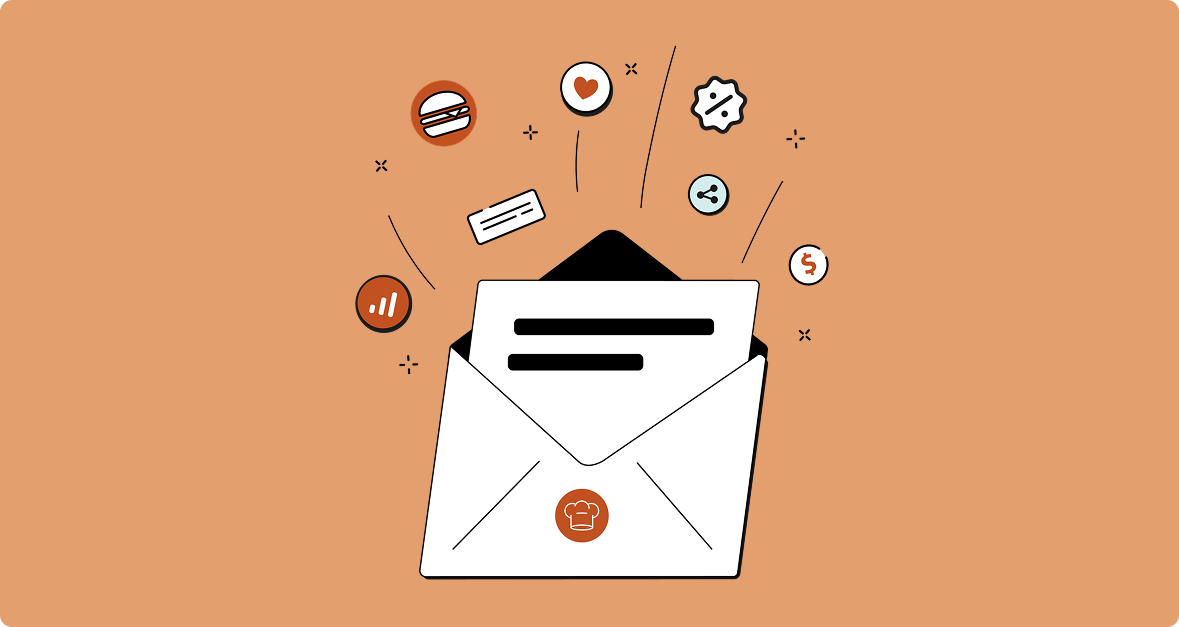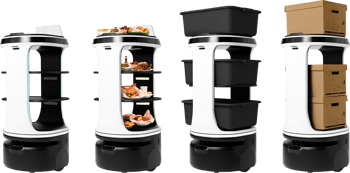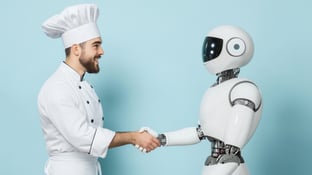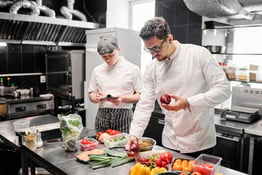Labor costs, scheduling headaches, staff no-shows, constant turnover… it all adds up. Keeping a solid team together while managing everything else in the restaurant is a huge task. And while none of these challenges are new, I’m hearing from more and more operators that employee turnover has reached a new level.
It’s not just hard to find good people, it’s hard to keep them.
According to 7shifts, a team management platform built specifically for restaurants, operators report an annual turnover rate of nearly 80 percent. And that aligns with what I’m seeing across the industry.
For small independent operators who are already juggling roles, constant staffing changes are overwhelming. So where does AI (artificial intelligence) come in to help?
AI in the Restaurant Industry: A Tool To Support, Not Replace, Your Team
AI isn’t about replacing people. It’s about easing the pressure on your team, freeing up time and reducing frustration. If you’re wondering how to use AI in the restaurant business, without adding more complexity, check out what I’ve learned.
Why HR Is One of the Most Complex Restaurant Challenges
Managing HR in a restaurant is complicated. Beyond hiring and payroll, you’re also handling compliance, scheduling, onboarding, training, and navigating the tricky landscape of labor laws. Many operators do it all with little to no automation.
When I ask restaurant owners what keeps them up at night, the answer is almost always the same: finding and keeping good employees, with rising labor costs coming in as a close second.
I understand why many restaurant operators are wary of new tools, especially when it comes to HR. For years, hiring, onboarding, and scheduling in small and medium-sized restaurants were done informally, often on paper. Paper applications, spreadsheets for scheduling – many of these tasks are still done the old-fashioned way.
The old way leaves room for errors, inefficiencies, and missed chances to build a stronger, more loyal team. And while that hands-on approach made sense when teams were smaller and turnover was manageable, as staffing challenges have intensified, those old systems are struggling to keep up.
With margins tight and labor pools shrinking, the urgency to improve has never been higher.
How to Use AI in the Restaurant Business Without Adding Headaches
AI tools can seem intimidating. But the best ones are designed to save time, reduce admin burden, and work with your team’s existing routines. They don’t replace your judgment or your hard work – they simply help take care of repetitive admin tasks that bog you down.
Two Main Types of AI Restaurant Tools: Point vs. Multi-Point
AI in the restaurant industry is most visible today through HR and operations tech. These fall into two broad categories.
Point Solutions: Great for Focus, Risky in Isolation
Point solutions are standalone apps that focus on a single function, like hiring, payroll, or training. They’re often affordable and easy to adopt, but the downside is they rarely integrate with each other.
Examples of point solutions:
Point solutions are often simple to adopt but come with limitations. Because data stays siloed, managing multiple systems can get expensive and messy fast.
Multi-Point Solutions: Fewer Systems, Fewer Headaches
More and more major POS (point of sale) companies are rapidly building their ecosystems to offer all-in-one solutions, combining several HR functions into the platform.
HR platforms like 7shifts, Restaurant365, and Otter combine multiple tasks, from scheduling to onboarding to payroll, in one integrated solution. Many POS platforms (like Toast, Square, and Lightspeed) are also evolving into HR hubs, offering staff management tools as part of their systems.


Subscribe to Our Monthly HR & Staffing Newsletter
Find solutions for hiring, scheduling, and retaining top talent in today's competitive market.
POS systems are no longer just for processing customer orders. The companies that build them are investing heavily in incorporating payroll systems, inventory management, reservation systems, phone answering software, accounting, third-party ordering systems, and more.
In my experience, having fewer systems that work together reduces headaches and mistakes. Multi-point solutions are also easier for small teams to manage, and they save money over time.
What AI Is Already Doing in Restaurants
AI is already solving everyday problems for restaurant operators, and doing it quietly in the background. Tools are getting smarter, faster, and more mobile-friendly.
Here are few real-world examples:
- Forecasting staffing needs by analyzing past sales, local events, and weather
- Automating onboarding and training, so new hires hit the ground running
- Identifying training gaps and personalizing learning paths
- Answering common employee questions via chatbots, freeing up managers
These are practical solutions, designed for the pace and complexity of the restaurant world.
Common Barriers to Using AI for Restaurant HR and How to Get Past Them
Let’s be real: Adopting AI in restaurants isn’t always smooth. Between tight budgets, busy teams, and a history of doing things manually, it can feel like just one more thing to manage.
Here’s what I hear most from operators – and how I help them move forward.
- “It costs too much.”
Understandable, but the right AI tools can reduce labor waste, improve retention, and save hours of manual work. They often pay for themselves within months. - “I don’t want another system to manage.”
Look for tools that integrate with the POS or HR tools you’re already using. The goal is fewer logins, fewer spreadsheets, and fewer headaches. - “Change is hard for my team.”
Start small. Use one feature that solves a real pain point, like automated scheduling, and build buy-in from there.
The bottom line: Adopting AI in a isn’t about adding complexity but removing friction. When tools work for you (not the other way around), your team feels the impact.
AI Isn’t About Tech for Tech’s Sake, It’s About Smarter Options
Running a restaurant is hard enough without drowning in paperwork and admin tasks.
If you’re still building schedules by hand, onboarding with paper forms, or spending hours on compliance, there is a better way. The real benefit of using AI in the restaurant business is getting time back.
The promise of using AI in restaurants lies in adopting smart tools that support the work you’re already doing. They help you build a stronger, more reliable team and keep your restaurant running smoothly.
When AI frees up your time from scheduling, onboarding, and compliance, you can focus on the heart of the restaurant: your team and your guests.
Not Sure Where to Start?
If you’re confused or stressed out by which tools are right for your restaurant, a tech consultation can help you cut through the noise. Schedule one today.
You’ll receive recommended solutions that fit your team, budget, and workflow, while ensuring that everything works together seamlessly.





